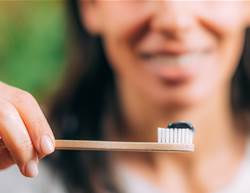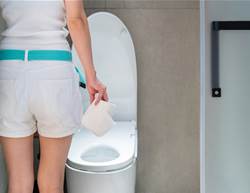Pretty much everything else about your body has changed in that time, so it's little wonder that your feet also undergo some alterations, both subtle and not-so-much, as you age.
Fortunately, taking a few moments to tend to your sole health can minimise age-related issues.
"Foot pain and discomfort aren't a natural part of growing older or something to just put up with," says Dr Emanuel Haber. "Much can be done to relieve pain, improve comfort, and prevent small foot problems from becoming major down the road."
Here are some common foot complaints that often arise with age—and how to give them the boot.
1. Fat vanishes
Mother nature provides humans with built-in insoles—collagen and elastin cushions, stuffed with adipose tissue, on the bottoms of your feet. But in a cruel twist on the middle-age spread, collagen production decreases through the years, thinning these fat pads.
Without this cushioning, "your feet feel fine in the morning, but toward the end of the day you have a lot of pain because you're essentially walking on bones," says foot specialist Dr Pedro Cosculluela. Though some clinics tout injections or fat transplants, there's no proof they work, he notes. The only surefire solution is to wear cushioned, comfortable shoes, reinforced with insoles or gel pads if needed.
2. Arthritis appears
Your feet boast more than 30 joints, all of which can degenerate with age, Cosculluela says. Arthritis most commonly strikes the big toe or the midfoot joints on the top of your foot. Besides pain, you might feel stiffness in the morning that improves once you get moving, then worsens again at night. Shoe inserts, exercises to increase range of motion, and losing weight if you're heavy may help, says podiatrist Andrew Shapiro.
Hip and knee arthritis also have trickle-down effects, altering your alignment in ways that can cause pain on the insides or outsides of your feet, Cosculluela says. If any of your joints ache, see your doctor—treating hip and knee arthritis with exercise or medications often lightens the load on your feet as well, he notes.
3. Toes curl up
And we don't mean in that sexy, between-the-sheets kind of way. Years of stuffing your piggies into high heels elevates your risk of hammertoes, permanent bends in your smaller digits. What can start as mild discomfort turns more painful over time, and unsightly corns and calluses can also crop up as your crooked toes rub against your shoes.
To prevent—and ease—hammertoes, cover corns and calluses with padding and trade in your pointy-toed pumps for shoes with wider toe boxes. "I often have women stand on top of a blank piece of paper barefoot, and trace the outline of their foot," Cosculluela says. "Then I put their shoe on top. If I can see toes sticking out, I know that's not a good shoe for them."
Good news, though: You don't have to ditch your stilettos completely. If you want to wear them for a night out, wear well-fitting flats made of flexible fabric like suede—even walking or running shoes, if you can—during the day. "The more support you can give your feet, the less inflammation you'll incur throughout the day—and the better you'll be able to tolerate a dressier shoe at night," says podiatrist Gennady Kolodenker.
4. Circulation slows
Diabetes, vein disease, and other conditions more common with age can slow the blood flow to your feet, Shapiro says. That makes each cut from stepping on a sharp object or new-shoe blister slower to heal. Combine that with nerve damage—which often goes hand in hand with the same health conditions—and you might not even notice a worsening infection, resulting in an ulcer that just won't heal.
If you have one of these health conditions, enlist a podiatrist on your heath care team. Inspect your feet regularly for cuts and scrapes, and seek treatment for them promptly. Consider installing a floor mirror in your bathroom so you see them more easily, Cosculluela advises.
5. Tendons tighten
Not as limber in yoga class these days? One reason: The water content in your tendons declines with age, stiffening the cords in your ankles, among other places. Not only can this interfere with Downward Dog, it also places you at greater risk for tears and ruptures, Haber says. Staying active helps counteract these effects, he notes. If you've had an Achilles tendon injury in the past, strengthening exercises such as calf raises can prevent relapses. To loosen up tight ankles, you can also try this exercise.










